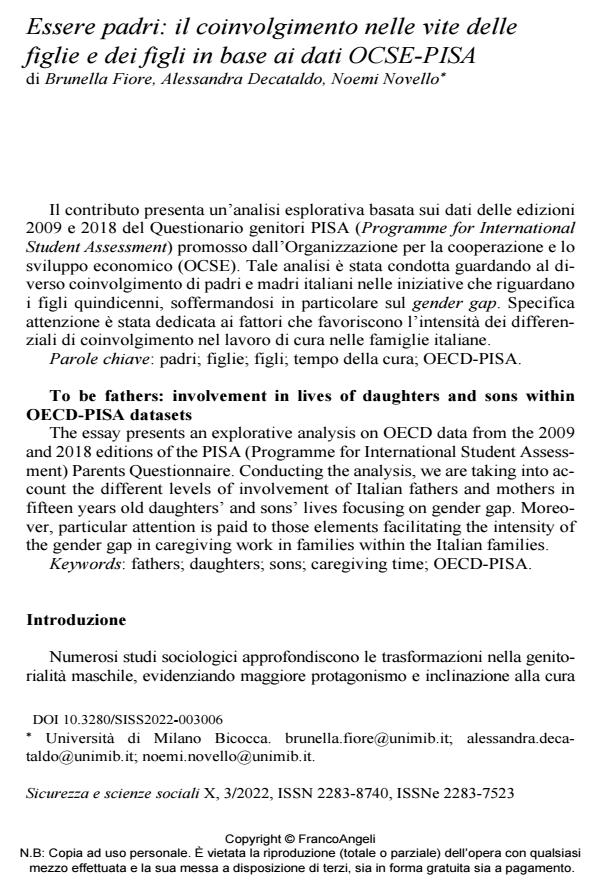To be fathers: involvement in lives of daughters and sons within OECD-PISA datasets
Journal title SICUREZZA E SCIENZE SOCIALI
Author/s Brunella Fiore, Alessandra Decataldo, Noemi Novello
Publishing Year 2022 Issue 2022/3
Language Italian Pages 17 P. 79-95 File size 231 KB
DOI 10.3280/SISS2022-003006
DOI is like a bar code for intellectual property: to have more infomation
click here
Below, you can see the article first page
If you want to buy this article in PDF format, you can do it, following the instructions to buy download credits

FrancoAngeli is member of Publishers International Linking Association, Inc (PILA), a not-for-profit association which run the CrossRef service enabling links to and from online scholarly content.
The essay presents an explorative analysis on OECD data from the 2009 and 2018 editions of the PISA (Programme for International Stu-dent Assessment) Parents Questionnaire. Conducting the analysis, we are taking into account the different levels of involvement of Italian fathers and mothers in fifteen years old daughters’ and sons’ lives fo-cusing on gender gap. Moreover, particular attention is paid to those elements facilitating the intensity of the gender gap in caregiving work in families within the Italian families.
Keywords: fathers; daughters; sons; caregiving time; OECD-PISA.
Brunella Fiore, Alessandra Decataldo, Noemi Novello, Essere padri: il coinvolgimento nelle vite delle figlie e dei figli in base ai dati OCSE-PISA in "SICUREZZA E SCIENZE SOCIALI" 3/2022, pp 79-95, DOI: 10.3280/SISS2022-003006